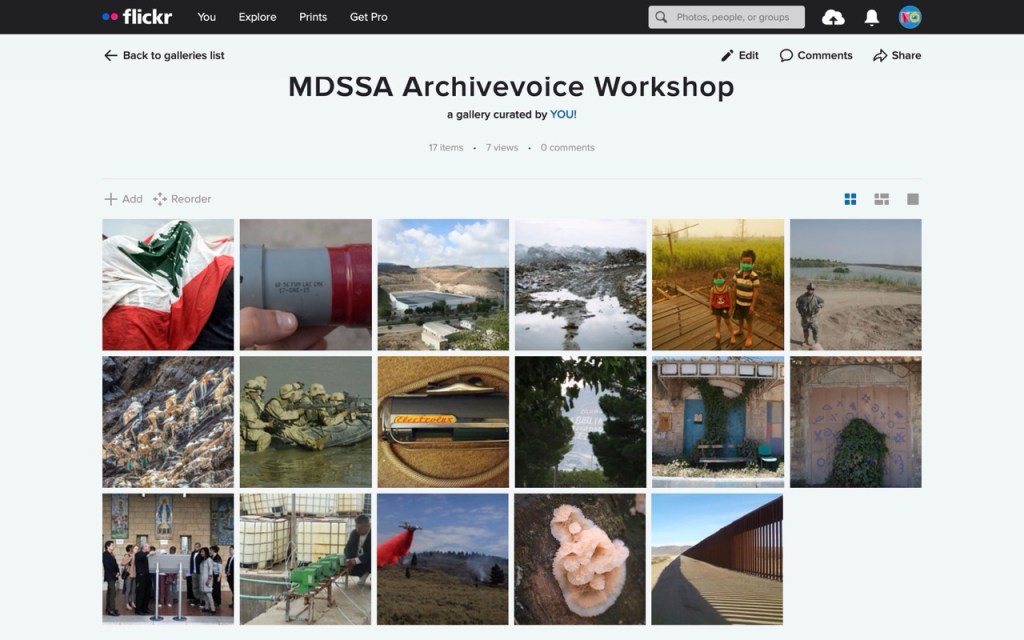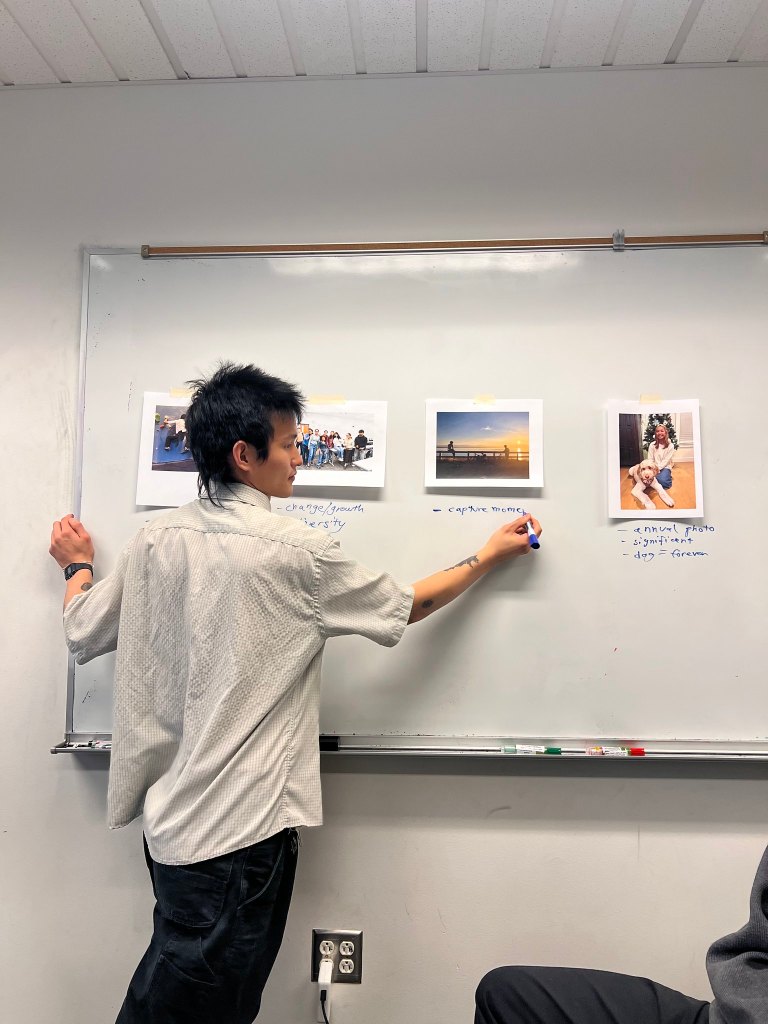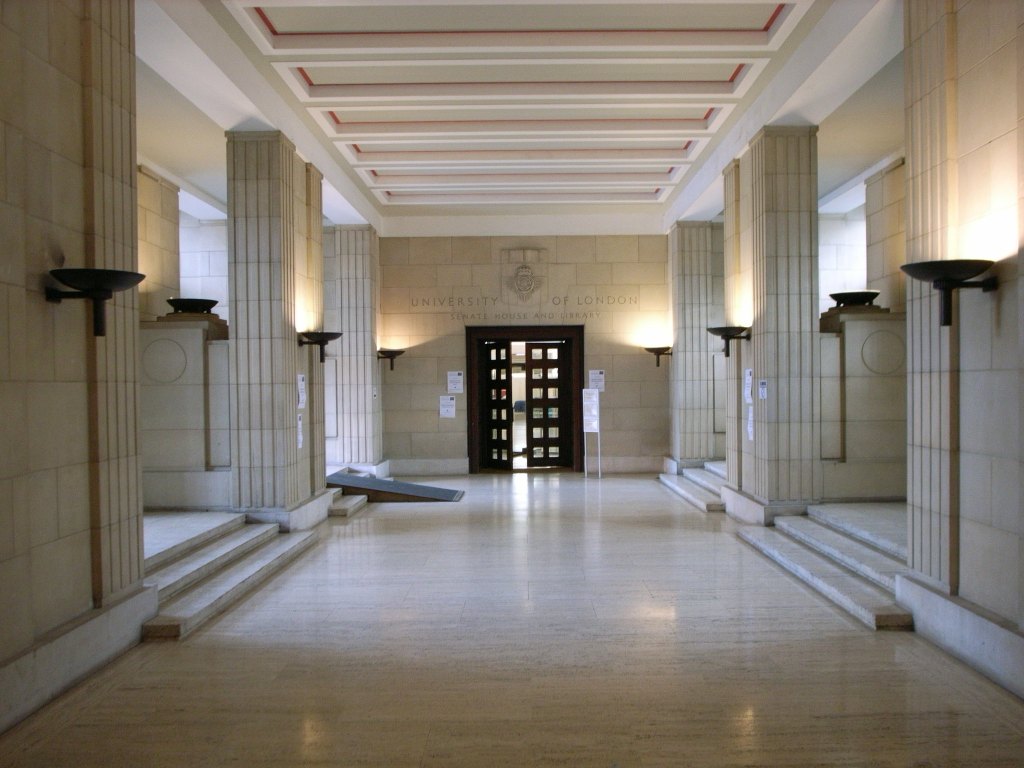In Part 1 of this series, I explored some of my past projects working with informal photo archives including uses of the qualitative research method Photovoice. In Part 2, I developed the research method of Archivevoice that builds on the principles of Photovoice to explore how engaging community members around their own archival materials (e.g. photographs) can be mutually serving for both researchers and their community partners to better understand and take ownership of their histories, experiences, and the challenges they face.
In this final installment, I share the results and reflections of an Archivevoice workshop I conducted with researchers from the Access in the Making Lab in the fall of 2024.
These researchers are all working on individual microprojects that engage in various ethnographic and creative research methods to explore a variety of issues relating to disability studies and environmental humanities. These initiatives are extensions of a broader project developed by the Access in the Making Lab called Mobilizing Disability Survival Skills for the Urgencies of the Anthropocene (MDSSA).
Teaching Archivevoice
The workshop consisted of three parts. First, I gave an overview of the Archivevoice method and its conceptual background. Next, I did a walkthrough of the Flickr.com website, highlighting the various features of the platform that could be used to tailor their search to make it relevant for their research parameters. This included the various filtering and search parameters, looking at image captions and descriptions, copyright licensing, geodata, tags, comments, albums, and groups. Next, I offered some prompts related to the themes of the MDSSA project and gave the researchers time to browse the collection of photos on Flickr. I collected the photos of interest and assembled them into a Flickr gallery.
Finally, we took a look at the images all together, and each researcher described their reflections on the process, what they found during their search, and what they learned about the process and about using Flickr as a research resource.
Access in the Making Lab
Access in the Making (AIM) Lab, is an anti-colonial, anti-ableist, feminist research lab working on issues of access, disability, environment and care through creative experimentation. Based in Montréal, Canada (on the unceded territory of the Kanien’kehà:ka nation), AIM’s members include academic and non-academic researchers, writers, and artists. From 2019-2024, I worked as the AIM Lab’s coordinator and am a member of the team working on the Mobilizing Disability Survival Skills for the Urgencies of the Anthropocene (MDSSA) project.
Present at the workshop were five researchers from the MDSSA project: Arseli, Diego, Rachel, Roï, and Tamara.
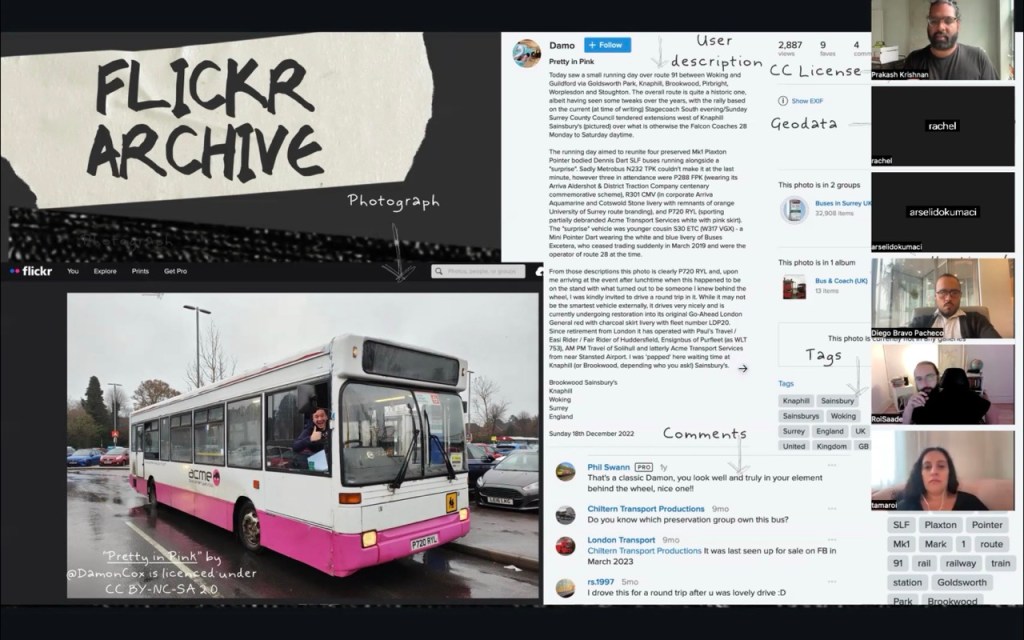
Arseli Dokumaci is the Principal Investigator of the project, and the other participants are each engaged in different photography-based microprojects that look at the relationships between human extractivist industries and their impacts on the ecological health of the specific environments in Mexico, Canada, Lebanon, and Iraq, respectively.
Flickr’s Affordances – Intertextual references demonstration
As I am also a part of the research team and am familiar with each person’s project, I began the second phase of the workshop by going through the different affordances offered by Flickr.com’s platform and then showed some images I had pre-selected as examples for the kinds of visual prompts that archived images could provide. One of these photos, labeled “San Diego, CA – Tijuana, Mexico” is a landscape photo taken January 15, 2014 presenting a stretch of the border wall in the desert between the Mexico-US border. The image is striking and imposing as the frame is almost perfectly quartered by the fence line fading into the distance The stark shadow cast by the fence doubles this feeling, adding weight and gravity to the sense of imposition created by the fence.
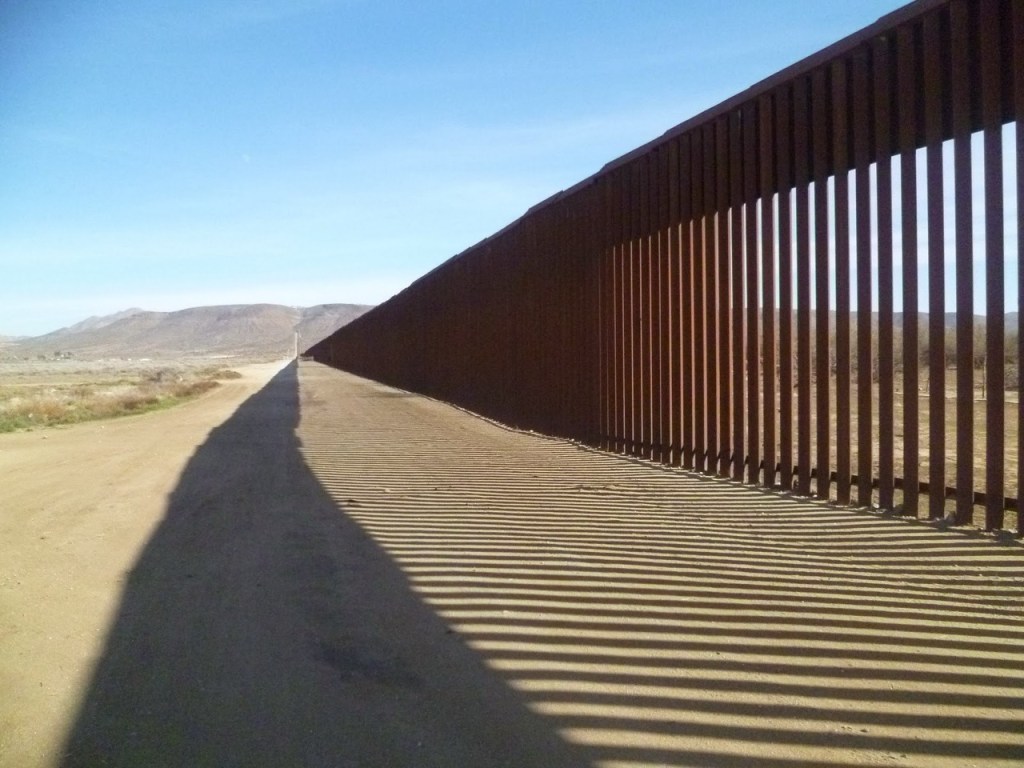
https://flic.kr/p/jexy1J
In addition to the visual information that can be gleaned from the photo, the caption and metadata also provide interesting angles to approach and understand the various actors at play in the image. The caption of the photo reads “Day Three: With Border Angles touring Ho[l]tville Cemetery in the desert – leaving water for people crossing the border in the desert (borderangles.org/).” This caption offers key pieces of information such as the context of the visit to the fence, who was there, and what their purpose was. The caption also highlights other MDSSA project themes like access to clean water – a lifesaving essential – that is often denied or inaccessible to migrants traveling to the United States from Mexico. Additional searches also led me to learn that the cemetery is Holtville, a border down in California, has become the final resting place for several unidentified migrants who perished in their journey seeking passage and safe entry to the United States. According to an article on the subject, the inhospitable environment in that area is one of the most common causes of death.[1]
The caption also links to Border Angels, a non-profit organization advocating for human rights, and immigration and social justice and seeking a reduction in the fatalities occurring during this migration journey. These intertextual references providing supporting documentation to better understand the socio-political context that these images represent. Another important reference which was noted in the tags of the image as well as in the description of the album in which it was located was the Maquila Solidarity Network which is a labour and women’s rights organization based in Toronto but with a geographic focus in Mexico and Central America. As will be presented shortly, maquilas are an important subject for one of the MDSSA projects.
Workshop discussions
To conclude the workshop, once the photos were selected and added to the gallery, each member went around and discussed their experience including their interesting finds as well as challenges faced when it came to searching the archive. Each participant had selected between one and three photos to add to the gallery that related to their respective MDSSA projects.
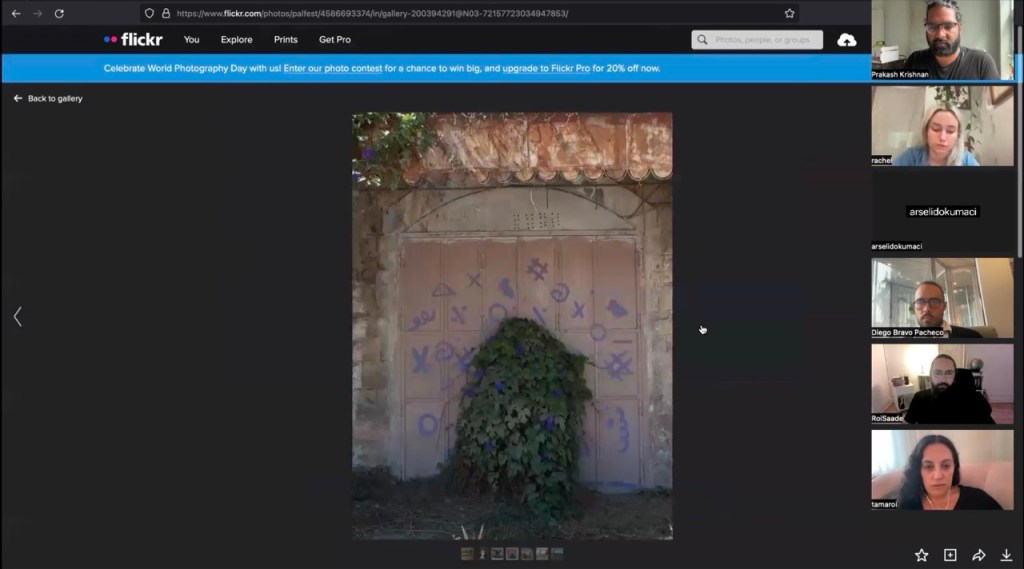
For each of the participants, this was their first time using Flickr in this way. Each also had their own approach to looking for photos that took them on a unique search pathway.
Below is a short description of each of the participants’ MDSSA project followed by their discoveries and reflections during the workshop.
Researcher: Diego Bravo
Project: The Third Shift: El Tercer Turno
This work comprises community-based research and ethnographic fieldwork in Ciudad Juárez, Mexico, exploring the lived experiences of women and young adult maquila workers. His work examines disabling working conditions in the maquila industry, highlighting the intersection of labour, health, migration, gender, and environmental racism.
For Diego, there were specific keywords he searched related to his project: Ciudad Juarez, maquiladora, and Electrolux. Through these prompts, he selected two photos to discuss. The first, titled a maquiladora, was taken and uploaded in March 2006 by Hilary Mason. In the album to which it belongs, Mason describes the photos as “from the G.O. Mexico trip! In February, 2006, a team of students and faculty from Providence, RI travelled to Tijuana, Mexico to help build schools and study immigration and border issues.”
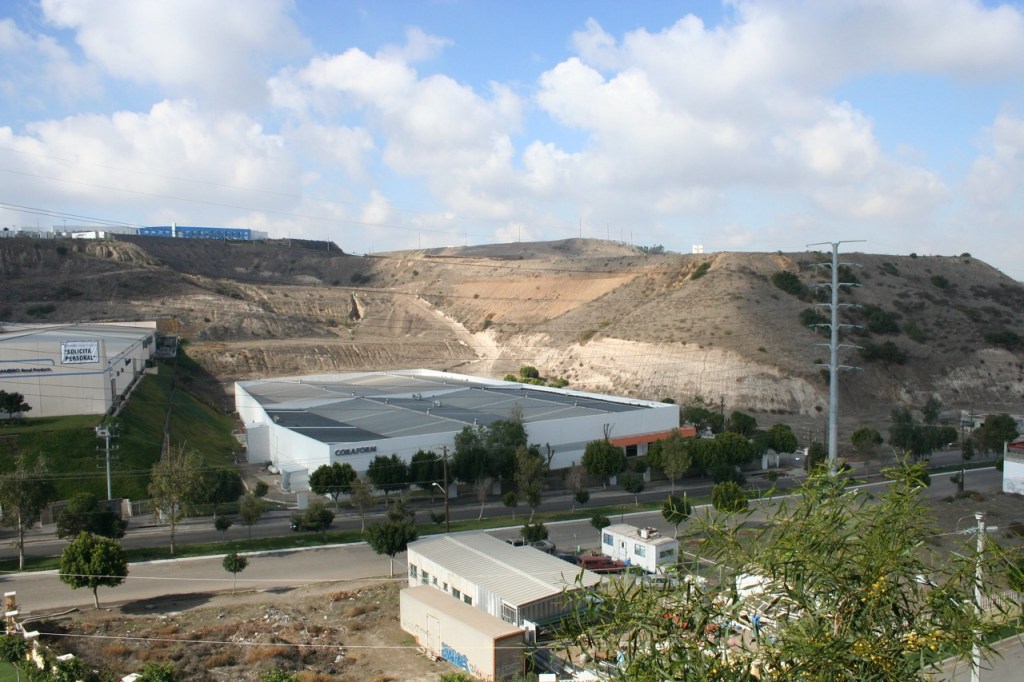
a maquiladora
While not a maquiladora in Ciudad Juarez, the specific site of Diego’s research, he notes the similarities in the two geographies: “but it’s a symbol of the industrial complex of the border of US and Mexico. And it related to me right away because of the aesthetic you get between the desert mountains and the flattened space the maquiladoras use in Ciudad Juarez… This is a prefabricated landscape; the border towns look alike in terms of the maquiladora space and the landscapes – it was interesting.” This allowed us to explore how Flickr can be used to help locate visually similar environments that could give additional context and resources to help respond to our respective research questions. Bringing up the photo I had previously noted of the fence at the US-Mexico border, we were able to identify the Maquila Solidarity Network as a possible collaborator for Diego’s research that he may not have otherwise encountered.
One of the maquilas he studies is operated by Electrolux AB. The Swedish home appliance company based in Stockholm reported a revenue the equivalent of over $12 billion USD. However, as Diego reports in his project, the working conditions within the maquiladoras producing Electrolux’s appliances are disabling for the employees. The construction of these factory border towns also give rise to other issues including housing and utilities instability as well as gender-based violence and femicide.[2]
Through his search on Flickr, he identified an old vacuum product of Electrolux likely produced at one of these maquiladoras. The image, simply named electrolux 10-13-2010 11-19-12 PM is part of a Flickr photo group Electrolux vacuum’s, shampooers & polishers. The group includes images of vacuums as well as advertising media for Electrolux’s vacuum products dating back to the 1960s. Understanding the evolutions of a company’s manufactured products and their demands could help researchers like Diego identify the socio-economic factors that contribute to the development of maquiladora cities like Ciudad Juarez and the consequences it has on the local population and the environment. [3]
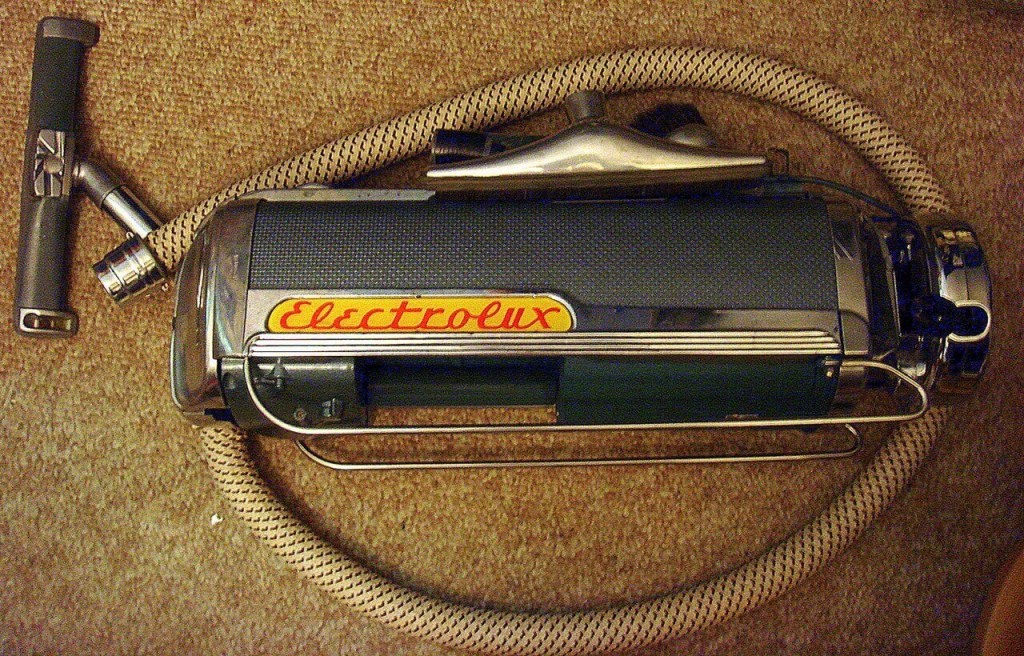
https://flic.kr/p/8JWYNy
Researcher: Rachel Rozanski
Project: The Paradise Project
This project critically examines the environmental naturalization project of the Toronto Port Lands which is toxic land built up out of industrial waste on Lake Ontario. Its waterways are being rerouted and the land is being converted into a mixed-use “waterfront paradise”. Rachel is documenting the changing cormorant populations that use this space as it transforms, and the objects being removed in the excavation process.
Rachel Rozanski similarly has a site-specific research project based in the Port Lands of Toronto, Canada. Currently undergoing a naturalization project, the area which was used as an industrial waste dumping site has been inhabited by cormorants, making up the largest colony in North America.[4] These birds have found ways to make their homes and nests in this otherwise uninhabited area. However, the naturalization efforts which seek to redevelop the Port Lands risk destroying the birds’ habitats.
While she was not able to find related images to her specific site, she was able to locate picture showing another site undergoing a similar phenomenon. In the image Plastic nets by Askjell Raudøy, taken and uploaded in July 2019, many birds (likely Northern Gannets) are seen resting on a cliffside. Several have used plastic netting to supplement in their nest building. In the comment section of the photo, Raudøy replies to a comment noting that “lots of birds die coz [sic] they get full of plastic or get strangled by nylon lines.” Rachel, in her presentations of her research has noted observing similar phenomenon in Toronto wherein there would be periods of mass death among the cormorant population. She had also noticed and photographed the various pieces of trash that the birds collected for their nests including lighters and cigarette butts and various pieces of plastic such as plastic bags. She believed that it’s likely the birds of the Port Lands suffer a similar fate to those of Runde Island in that either their plastic consumption or their exposure to deadly industrial toxins. At the same time, however, is it this toxic land that is free of human activity that allows them the space to build their colony.
Researchers: Tamara Abdul Hadi & Roï Saade
Project: Choreography of the Euphrates
This project explores the Euphrates River in Iraq through photography and counter-cartography, using a post-colonial and post-conflict lens. It is an attempt to counter-map the entire course of the river in Iraq through images. Documenting its curves, splits, and estuaries and its ever-changing ecology along with its inhabitants, all the while challenging the prevailing decades-long perception of the country shaped by a lens of conflict, violence, and insensitivity.
Other researchers took a different approach to searching in the Flickr archive. For instance, Tamara noted how she first looked up her own name out of curiosity. “And then I ended up on this Palestine Festival of Literature page that I’ve photographed before. But then I saw this that said ‘Shops forced to close becoming overgrown’… it’s in Hebron, the shops in the old city are mostly closed in that area.” This photograph also had aesthetic links to Roï’s project which includes similar portraits of abandoned buildings covered in overgrowth.
As a professional photographer, it was interesting to see how Tamara’s photos circulated and were uploaded to Flickr and how their arrangements in different albums and groups connected them to other photographs. For instance, headshots she tookof rapper Narcy (formerly The Narcysist) located in an album called The Narcycist uploaded by Cardinal Spin, a communications agency. Elsewhere, her portraits from the series Picture an Arab Man are featured in various albums and uploaded by different users.
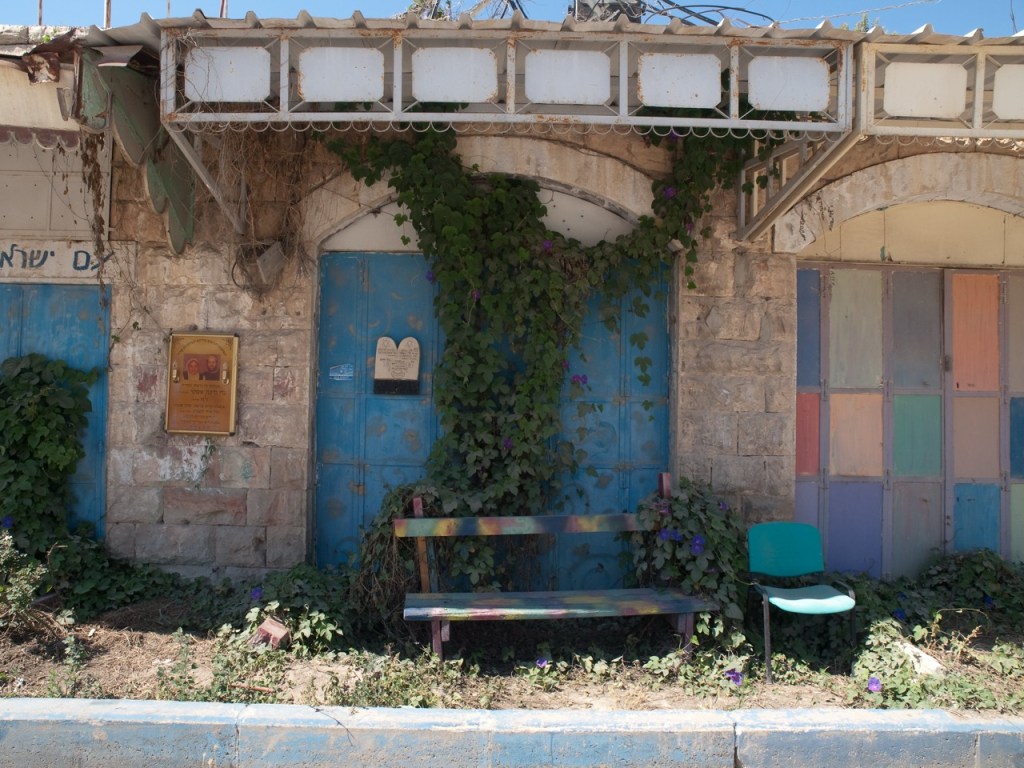
Researcher: Roï Saade
Project: A Danse of Despair
This project is a close examination of the artist’s personal photo archive of pictures taken in the aftermath of the October 17 Revolution in Lebanon in 2019. Largely depicting quiet landscapes and abandoned urban infrastructure, the archival exhibition invites a reflection on both the human and environmental impacts of war.
Similar to Tamara, Roï was also able to locate himself within the archive. Through searching for pictures from the revolution and protests in Lebanon, he located an image he took of a pair walking, their heads and backs covered by a Lebanese flag that appears to be wet. He explained that this image was “used for donations and fundraising. This [upload] is by the printer [Gulf Photo Plus]. This photo, I think, raised like $100,000 of donations back then… In my project… there is a photo of this but in decay, the flag became orange, because it’s a printed poster on the street.”
During a previous project meeting, Roï had presented an image of this same picture printed onto a poster plastered outside. The poster, over time, had become faded and yellowed from exposure to the elements. This recovery of the image through Flickr highlights how image deposits to the platform can act as a kind of time capsule, not only in terms of the snapshot of the contents of the photo that are situated in a particular time and place, but also that Flickr can be a place for media which evolves as a result of being there. In this instance, we found a source image after having already seen the future of this image through the way it had been repurposed and reproduced as a public fundraiser tool. This generated another idea for a research method that uses the Flickr archive – to try and track the movement and evolution of a particular image, symbol, place, etc., over time to try to understand how these changes reflect possible social developments (e.g. the shops in Hebron that were forced to close).
Lessons learned
With the richness of features offered on the Flickr platform, there was a learning curve when it came to getting the researchers familiar with the site and its features. This is something to note for future studies to dedicate enough time to learn the range of functions. It was also the first time that the researchers had ever used Flickr, or the first time in a long time. The reorientation was therefore something important to highlight as well as the important place Flickr occupied in the movement to the social media aspect of the Internet that arose in the era of the transition to Web 2.0.
Another challenge that was noted was the Anglocentrism of much of the topics that were searched during the workshop. Diego mentioned being “interested in typing other words in English since most of what I was typing was in Spanish. That’s maybe why I didn’t get that many results.” Arseli Dokumaci responded noting that “at some point I searched in Turkish but there wasn’t much stuff coming up, which is also interesting with what Diego was saying – like how much it is an English-dominated medium.” Tamara also noted something similar regarding her searches around the Euphrates River in Iraq. Many of the photos she identified were taken by members of the US Army during the Iraq War, giving a very particular perspective and political context to the landscapes being photographed.
Finally, the last stage in the Archivevoice methodology is to put together a public exhibition of the highlighted photos and other archival documents identified during the research. While many of the images that were selected during the workshops have some sharing permissions, others had complete copyright restrictions preventing them from appearing in other publications (such as this blog). As such, we decided to keep the public presentation of our selected images in the form of a gallery on Flickr itself. This feature allows for users to collect photos taken by other users and curate them into a virtual gallery that can be viewed publicly. As long as the viewing privacy setting of the photo is not set to private, any photo uploaded to Flickr can be collected into an album, regardless of its copyright license.
Overall, the workshop demonstrated an interest among humanities researchers and artists engaged in participatory action and community research to explore the potential uses of Archivevoice and Flickr in their respective research projects. Flickr, with its repository of billions of images, proves to be an important resource for the documentation and preservation of various histories, cultures, ecologies, etc.
Through Archivevoice projects, Flickr and other such image and media repositories can be activated to have these documents revisited and put into conversation with contemporary issues. It is my hope that this workshop summary provides some insight into the possibilities of the method and encourages other community researchers to put it into action.
Footnotes
[1] Guidos, “At Burial Ground for Unidentified Migrants, Sisters Pray for the Dead.”
[2] Schyllander, “The Gendered Impact of Neoliberalism.”
[3] Lyne, “Electrolux Picks Juarez for 3,000-Worker Plant; 885 Johnson Controls Workers Also Mexico-Bound.”
[4] “Birds of Tommy Thompson Park.”
References
- Guidos, Rhina. “At Burial Ground for Unidentified Migrants, Sisters Pray for the Dead.” Global Sisters Report, April 15, 2024. https://www.globalsistersreport.org/news/burial-ground-unidentified-migrants-sisters-pray-dead, https://www.globalsistersreport.org/news/burial-ground-unidentified-migrants-sisters-pray-dead.
- Lyne, Jack. “Electrolux Picks Juarez for 3,000-Worker Plant; 885 Johnson Controls Workers Also Mexico-Bound.” Site Selection, April 19, 2004. https://archive.siteselection.com/ssinsider/pwatch/pw040419.htm.
- Schyllander, Alice. “The Gendered Impact of Neoliberalism: Violence and Exploitation of Women Working in Maquiladoras.” Senior Honors Theses and Projects, January 1, 2018. https://commons.emich.edu/honors/627.
- Tommy Thompson Park: Toronto’s Urban Wilderness. “Birds of Tommy Thompson Park.” Accessed December 17, 2024. https://tommythompsonpark.ca/park-species/birds/.

